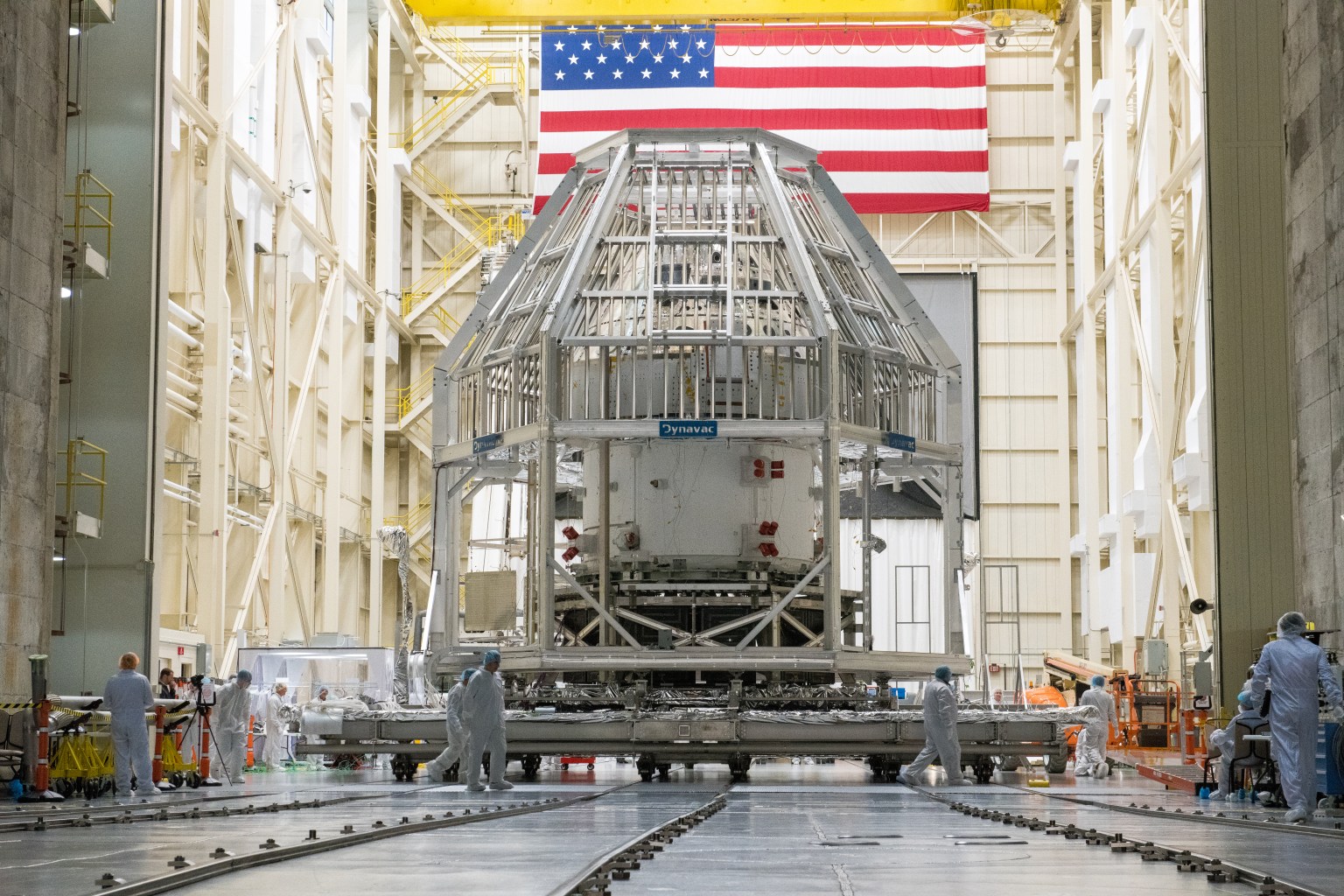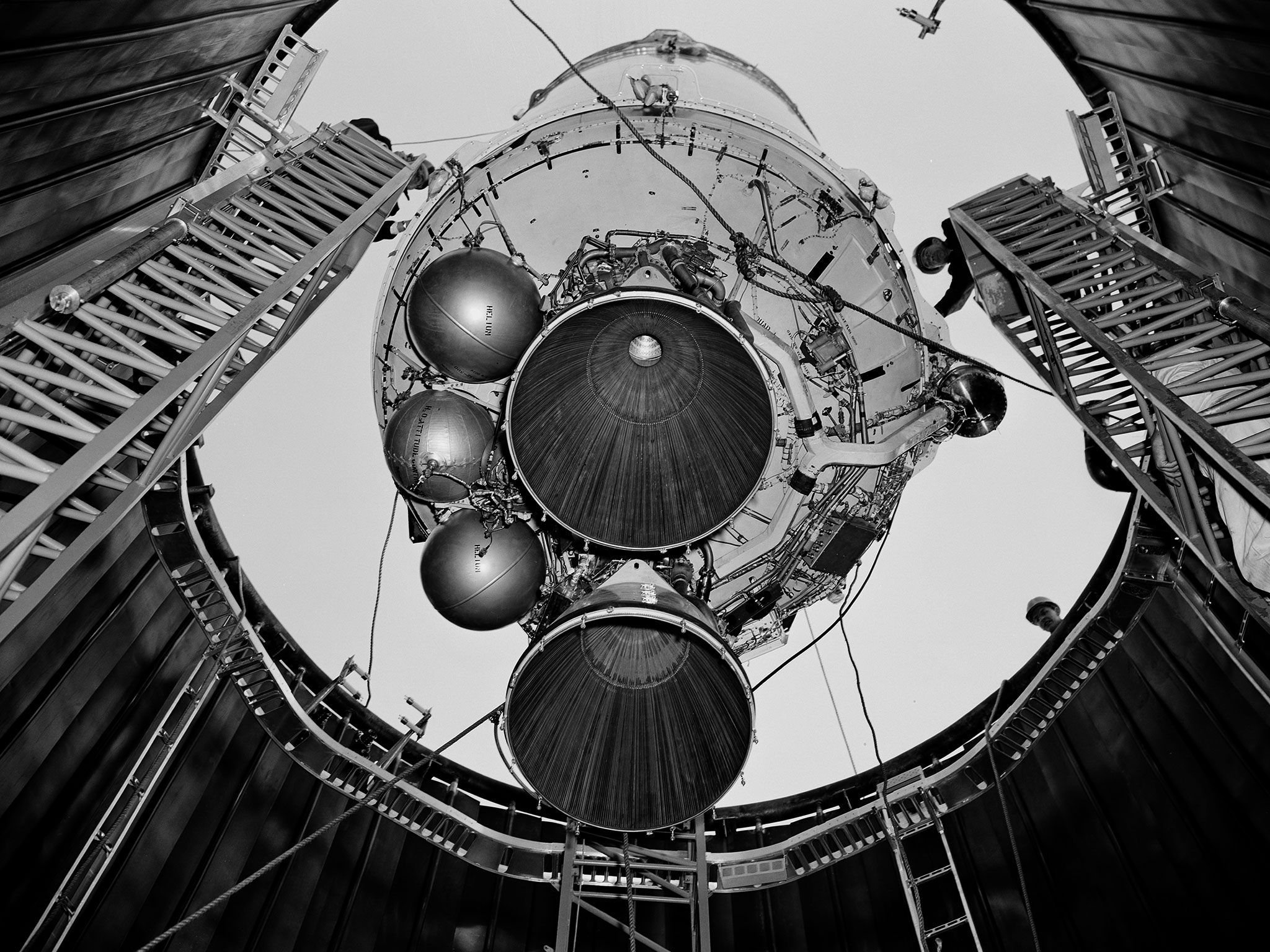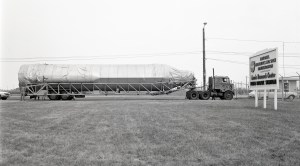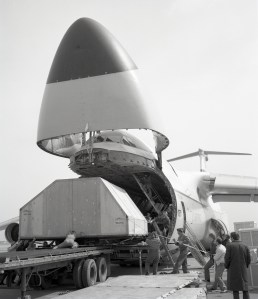In early 2020, NASA’s Glenn Research Center achieved a major milestone for the Artemis program by verifying that the systems on NASA’s new Orion spacecraft functioned in a simulated space environment. Project manager Nicole Smith explained, “We like to say, ‘we test like we fly.” The center began testing spacecraft as they fly over 50 years earlier while preparing the Centaur stage to transport landers to the Moon prior to the Apollo missions in the 1960s.
In July 1962, NASA decided to use General Dynamics’ new, unproven Centaur rocket with an Atlas booster to launch a series of Surveyor spacecraft to the lunar surface to scout landing sites for Apollo.
After a failed preliminary launch attempt, the Centaur program was transferred to the Lewis Research Center (today, NASA Glenn) in the fall of 1962 for an intensive review. The center built or updated several facilities specifically for Centaur. The most significant modification was the conversion of the Altitude Wind Tunnel into a vacuum tank known as the Space Power Chambers (SPC).
Center Director Abe Silverstein, who had recently served as NASA’s chief of Space Flight Programs, personally oversaw Lewis’ Centaur effort. Silverstein’s experience with Project Mercury influenced his belief that all new space hardware should be tested in simulated space conditions prior to launch. The low pressure, cold temperatures, and radiation in space could affect the operation of electronics and other systems.
A dome was added to the new SPC space tank in 1963 so the Centaur could stand vertically inside. A 42-foot-high copper cryoshroud built around the vehicle produced the low temperatures of space, and 259 high-powered lamps simulated solar radiation on the vehicle. Massive diffusion pumps removed the air to create the near vacuum found at 100 miles altitude. On March 19, 1964, a Centaur vehicle was lowered into the chamber and onto a test stand for testing.
During the SPC test program, Lewis engineers recreated entire Centaur missions without firing the engines. This included mimicking the launch phase, separation from the Atlas, first engine burn, coast, second engine burn, and deactivation of the systems. The Centaur was subjected to 20 to 30 of these cycles to verify the performance of different electronics packages in space.
The SPC tests, which revealed that pressurization of the electronics cannisters was harmful and that overall power levels should be low to minimize overheating, were a key component of Lewis’ extensive effort to ensure that Centaur was not only ready for flight but did not delay the Apollo missions.
An Atlas-Centaur successfully launched the first Surveyor to the Moon on May 30, 1966. Centaurs delivered six additional Surveyors to the lunar surface prior to the first Apollo landing in July 1969. Centaur has gone on to launch dozens of probes, satellites, and observatories and remains active today.
As NASA’s Artemis prepares to return to the Moon, the center tested the Orion spacecraft for eight weeks in 2020 in the vacuum, low temperatures, and radiation of space inside the Space Environments Complex at Plum Brook Station (today, Armstrong Test Facility). The vehicle was then tested in ambient conditions to ensure radio frequency signals did not disrupt the electronics.
The tests went exceptionally well, and the Orion vehicle was returned to the Kennedy Space Center on March 25, 2020, to prepare for the Artemis I initial launch in August 2022.
Robert S. Arrighi
NASA’s Glenn Research Center
A longer version of this article appears in NASA History News & Notes, Volume 39, Number 3, Fall 2022.































